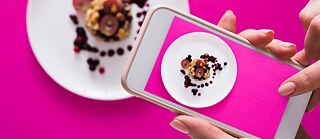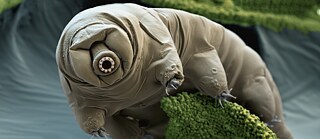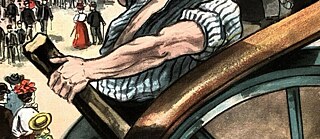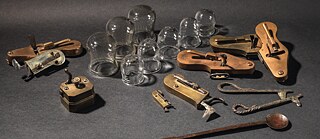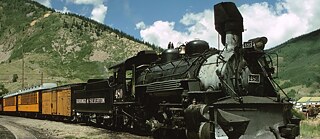Foodstagramming
Click… Bite!
A pause before eating? To make your meals more pleasurable, wait just a moment, preferably with camera in hand.
When the French inventor Joseph Nicéphore Niépce photographed a table setting with a bowl, wine bottle, and bread in 1832, he probably never imagined that he had laid the foundation for what we call “foodstagramming” today. It was the unofficial dawn of “food porn.” 190 years later, food has become the most photographed thing on social media.
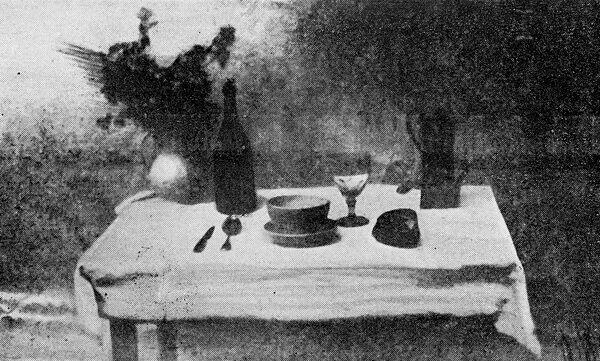 Still life of a laid table by Joseph Nicéphore Niépce (c. 1832), the world’s first “foodstagram”
| © Wiki Commons
Until that moment, when the inventor of heliography took the oldest known photograph of a meal, food had only been painted. The meal still life had represented a separate still life genre since the early 1600s. It had its heyday in the first half of the seventeenth century, driven by the Flemish painter Clara Peeters, who is considered a pioneer of the genre.
Still life of a laid table by Joseph Nicéphore Niépce (c. 1832), the world’s first “foodstagram”
| © Wiki Commons
Until that moment, when the inventor of heliography took the oldest known photograph of a meal, food had only been painted. The meal still life had represented a separate still life genre since the early 1600s. It had its heyday in the first half of the seventeenth century, driven by the Flemish painter Clara Peeters, who is considered a pioneer of the genre.
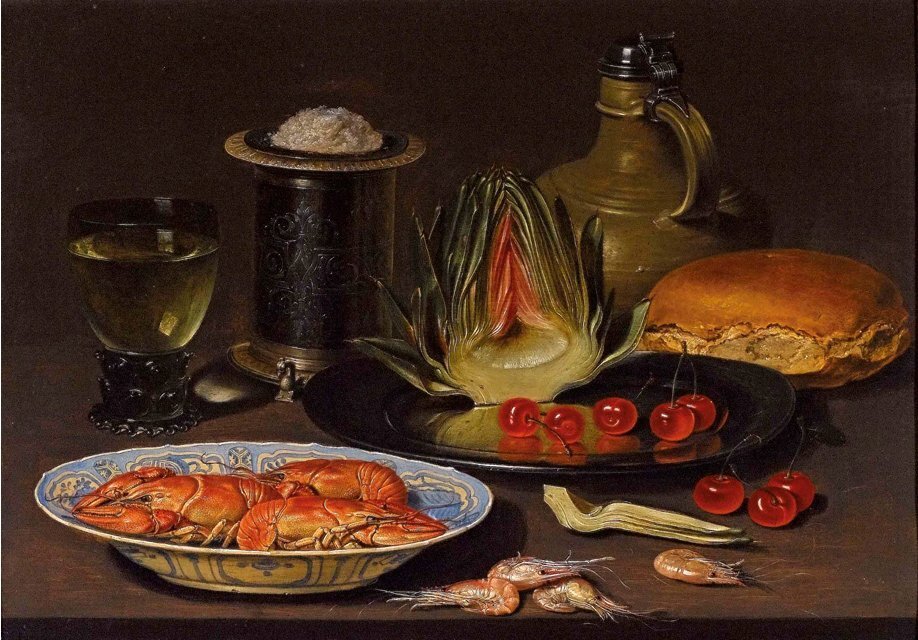 Still life with crayfish and an artichoke by the Flemish painter Clara Peeters, pioneer of the genre (c. 1618)
| © Wiki Commons
Still life with crayfish and an artichoke by the Flemish painter Clara Peeters, pioneer of the genre (c. 1618)
| © Wiki Commons
In the last 10 years, taking pictures of meals with smartphones has become so rampant that some New York restaurants have decided to simply ban the practice on their premises. In the eyes of some restaurant operators and chefs, people constantly fiddling with cell phone cameras disrupts the ambience, holds up business, and often does injustice to the quality of the painstakingly prepared food, which is often lukewarm by the time the first bite is finally consumed.
Several scientific studies have investigated the effect of taking pictures on the enjoyment of a dining experience and came to the same conclusion: It positively influences the perception of the food on our plates and it tastes particularly good to us afterwards. The main reason for this is anticipation. The process of delaying the meal by meticulously preparing the photo increases the enjoyment of the meal. We pay more attention to our food, eat with more awareness and thus more slowly, which in turn improves digestion and can even help us lose weight.
It can also benefit the psyche. Sharing food has always been a social ritual. Whenever family or friends are absent, sharing photos of food replaces this ritual. We are happier when we can share our pleasure with others.
At online happenings like The Bake Fest, workshops on photography and videography for social media are as much a part of the program as the actual baking classes. On countless Internet forums and food blogs, tips are exchanged on how best to present one’s food, from the perfect arrangement of the food in a triangle for better image composition to the ideal shooting angle of 45 degrees.
Seattle-based baker, cookbook author, and food stylist Aran Goyoaga, whose Instagram account @cannellevanille has more than 335,000 followers and who was nominated for the prestigious James Beard Award, primarily follows the principle of “less is more.”
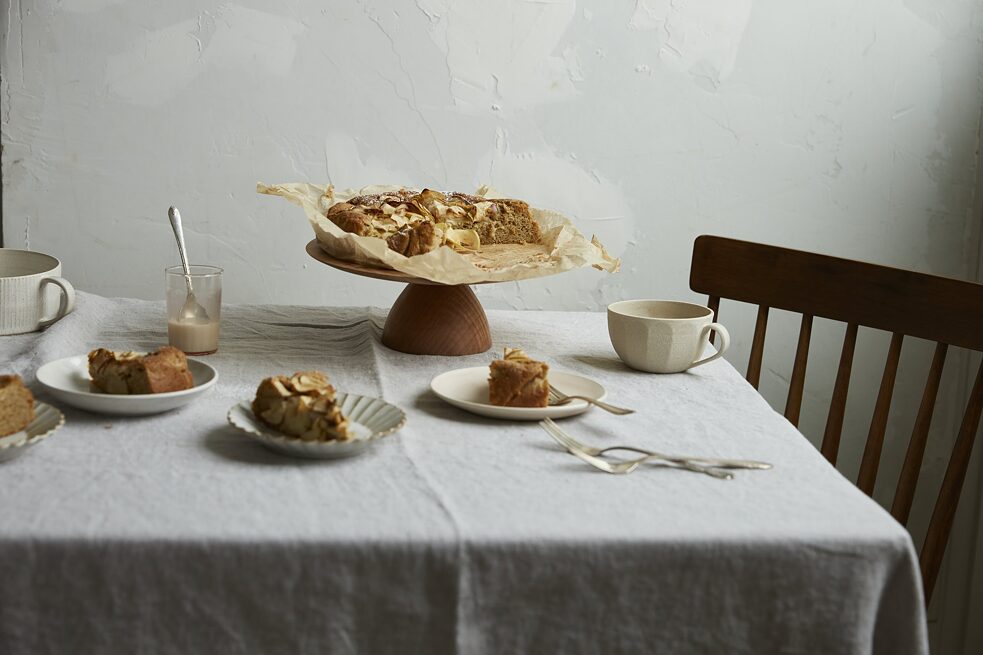 Still life in food blogger Aran Goyoaga’s bestselling cookbook “Cannelle Et Vanille Bakes Simple” (2021)
| Aran Goyoaga
“I approach Instagram photography just like any other photography. Find a source of light that is diffused and not polluted (meaning light that bounces off colored walls, et cetera). Style very simply without too many props that distract from the food. Use textural ceramics and surfaces.”
Still life in food blogger Aran Goyoaga’s bestselling cookbook “Cannelle Et Vanille Bakes Simple” (2021)
| Aran Goyoaga
“I approach Instagram photography just like any other photography. Find a source of light that is diffused and not polluted (meaning light that bounces off colored walls, et cetera). Style very simply without too many props that distract from the food. Use textural ceramics and surfaces.”
No one can say whether Joseph Nicéphore Niépce was aware of these techniques when he composed his image. What we can assume with certainty, however, is that the wait made his glass of wine and the slice of bread all the more delicious.
 Still life of a laid table by Joseph Nicéphore Niépce (c. 1832), the world’s first “foodstagram”
| © Wiki Commons
Until that moment, when the inventor of heliography took the oldest known photograph of a meal, food had only been painted. The meal still life had represented a separate still life genre since the early 1600s. It had its heyday in the first half of the seventeenth century, driven by the Flemish painter Clara Peeters, who is considered a pioneer of the genre.
Still life of a laid table by Joseph Nicéphore Niépce (c. 1832), the world’s first “foodstagram”
| © Wiki Commons
Until that moment, when the inventor of heliography took the oldest known photograph of a meal, food had only been painted. The meal still life had represented a separate still life genre since the early 1600s. It had its heyday in the first half of the seventeenth century, driven by the Flemish painter Clara Peeters, who is considered a pioneer of the genre. Still life with crayfish and an artichoke by the Flemish painter Clara Peeters, pioneer of the genre (c. 1618)
| © Wiki Commons
Still life with crayfish and an artichoke by the Flemish painter Clara Peeters, pioneer of the genre (c. 1618)
| © Wiki Commons
From Shellfish to Pizza
Shellfish, artichokes and lemons were particularly frequently depicted in the still lifes of the time. Today, the most photographed food worldwide is pizza, closely followed by sushi. #food, #foodporn, #instafood and #yummy are among the 100 most popular Instagram hashtags. A visit to a restaurant without observing at least one foodstagrammer has become increasingly rare. The world capital of snapshot-loving foodies is New York, with over a million photos of meals on social media.In the last 10 years, taking pictures of meals with smartphones has become so rampant that some New York restaurants have decided to simply ban the practice on their premises. In the eyes of some restaurant operators and chefs, people constantly fiddling with cell phone cameras disrupts the ambience, holds up business, and often does injustice to the quality of the painstakingly prepared food, which is often lukewarm by the time the first bite is finally consumed.
Anticipation Heightens Appreciation
Even if taking photos may rile some people in the restaurant kitchen or at the next table, the photographers themselves not only gain likes, but also health benefits.Several scientific studies have investigated the effect of taking pictures on the enjoyment of a dining experience and came to the same conclusion: It positively influences the perception of the food on our plates and it tastes particularly good to us afterwards. The main reason for this is anticipation. The process of delaying the meal by meticulously preparing the photo increases the enjoyment of the meal. We pay more attention to our food, eat with more awareness and thus more slowly, which in turn improves digestion and can even help us lose weight.
It can also benefit the psyche. Sharing food has always been a social ritual. Whenever family or friends are absent, sharing photos of food replaces this ritual. We are happier when we can share our pleasure with others.
The Perfect Foodstagram
While the phenomenon of foodstagramming has now attracted research interest in the field of psychology, the photographic technology behind it is also becoming more of a science. Baking and cooking courses have long since ceased to consist solely of teaching food preparation; marketing plays an increasingly important role. The camera has become just as important a utensil as the wooden spoon.At online happenings like The Bake Fest, workshops on photography and videography for social media are as much a part of the program as the actual baking classes. On countless Internet forums and food blogs, tips are exchanged on how best to present one’s food, from the perfect arrangement of the food in a triangle for better image composition to the ideal shooting angle of 45 degrees.
Seattle-based baker, cookbook author, and food stylist Aran Goyoaga, whose Instagram account @cannellevanille has more than 335,000 followers and who was nominated for the prestigious James Beard Award, primarily follows the principle of “less is more.”
 Still life in food blogger Aran Goyoaga’s bestselling cookbook “Cannelle Et Vanille Bakes Simple” (2021)
| Aran Goyoaga
“I approach Instagram photography just like any other photography. Find a source of light that is diffused and not polluted (meaning light that bounces off colored walls, et cetera). Style very simply without too many props that distract from the food. Use textural ceramics and surfaces.”
Still life in food blogger Aran Goyoaga’s bestselling cookbook “Cannelle Et Vanille Bakes Simple” (2021)
| Aran Goyoaga
“I approach Instagram photography just like any other photography. Find a source of light that is diffused and not polluted (meaning light that bounces off colored walls, et cetera). Style very simply without too many props that distract from the food. Use textural ceramics and surfaces.”No one can say whether Joseph Nicéphore Niépce was aware of these techniques when he composed his image. What we can assume with certainty, however, is that the wait made his glass of wine and the slice of bread all the more delicious.


